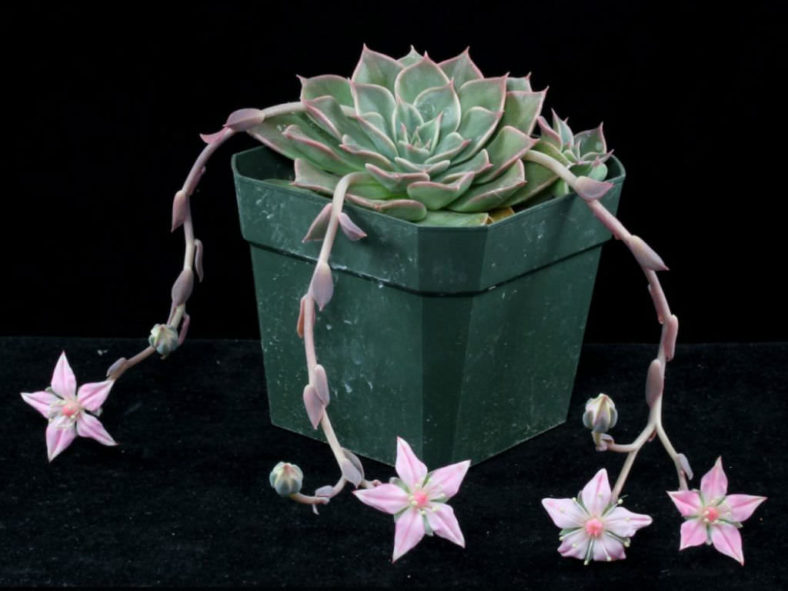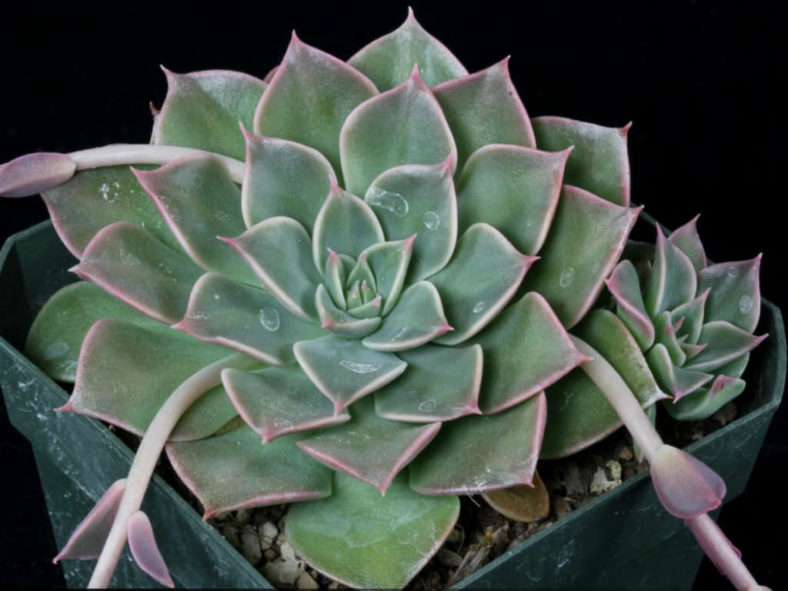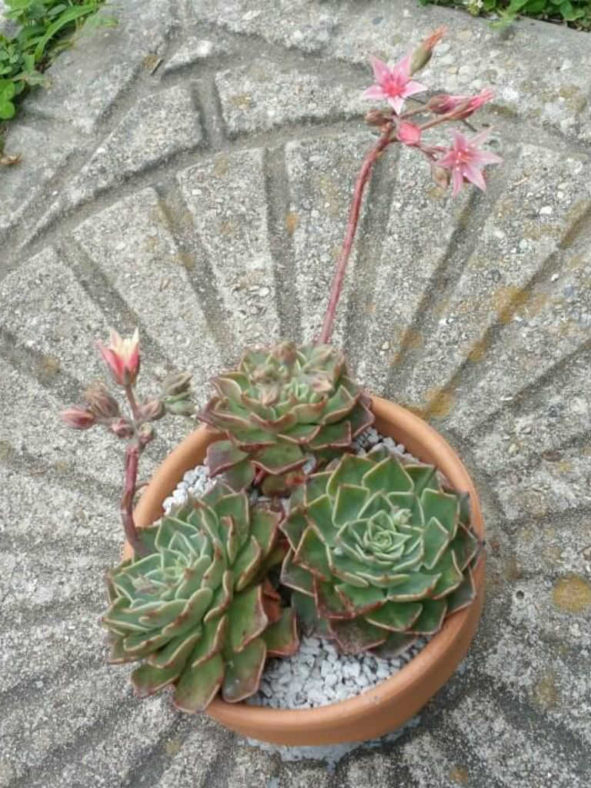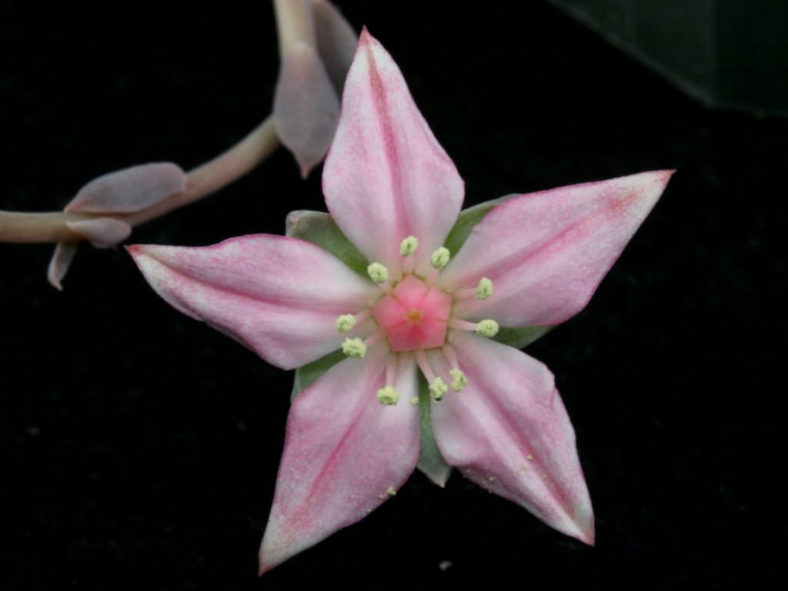-Scientific Name
×Tacisedum 'Barton Pink'
Synonym(s)
×Graptosedum 'Barton Pink'
Scientific Classification
Family: Crassulaceae
Subfamily: Sempervivoideae
Tribe: Sedeae
Nothogenus: ×Tacisedum
Origin
×Tacisedum 'Barton Pink' is a hybrid resulting from the cross between ×Tacisedum 'Heswall' (also known as ×Graptosedum 'Heswall') and Tacitus bellus (also known as Graptopetalum bellum).
Description
×Tacisedum 'Barton Pink', also known as ×Graptosedum 'Barton Pink', is a small succulent that forms rosettes of grayish-green leaves with whitish margins. The rosettes can reach up to 5 inches (12.5 cm) in diameter, while the leaves can grow up to 1.6 inches (6.5 cm) long.
The flowers are star-shaped and appear at the top of branched stalks that can grow up to 10 inches (25 cm) long. They can reach up to 1 inch (2.5 cm) in diameter. The petals are bright pink with a darker mid-stripe inside and much paler pink with a greenish pink mid-stripe outside.

Hardiness
USDA hardiness zone 9a to 11b: from 20 °F (−6.7 °C) to 50 °F (+10 °C).
How to Grow and Care
The rules for Graptopetalum care are similar to those for most succulents. All require lots of sunlight to look their best. They require gritty, porous soil with excellent drainage. Water the plants regularly over summer, letting the soil dry out between waterings. Minimal water is required over winter. Overwatering is a cause of root rots, and the plant can get several pest infestations. Fertilize once during the growing season with a balanced fertilizer diluted to 1/4 strength.
Graptopetalums are generally easily propagated by seeds, leaf cuttings, or offsets. Any rosette that breaks off has the potential to root and start a new plant. Even a leaf that drops off will quickly root below the parent plant and produce a new rosette. The new plant feeds off the leaf until it shrivels and falls off. By then, the new little plant had rooted and sprouted new leaves.
See more at How to Grow and Care for Graptopetalum.
Links
- Back to nothogenus ×Tacisedum
- Succupedia: Browse succulents by Scientific Name, Common Name, Genus, Family, USDA Hardiness Zone, Origin, or cacti by Genus
Photo Gallery
Click on a photo to see a larger version.



